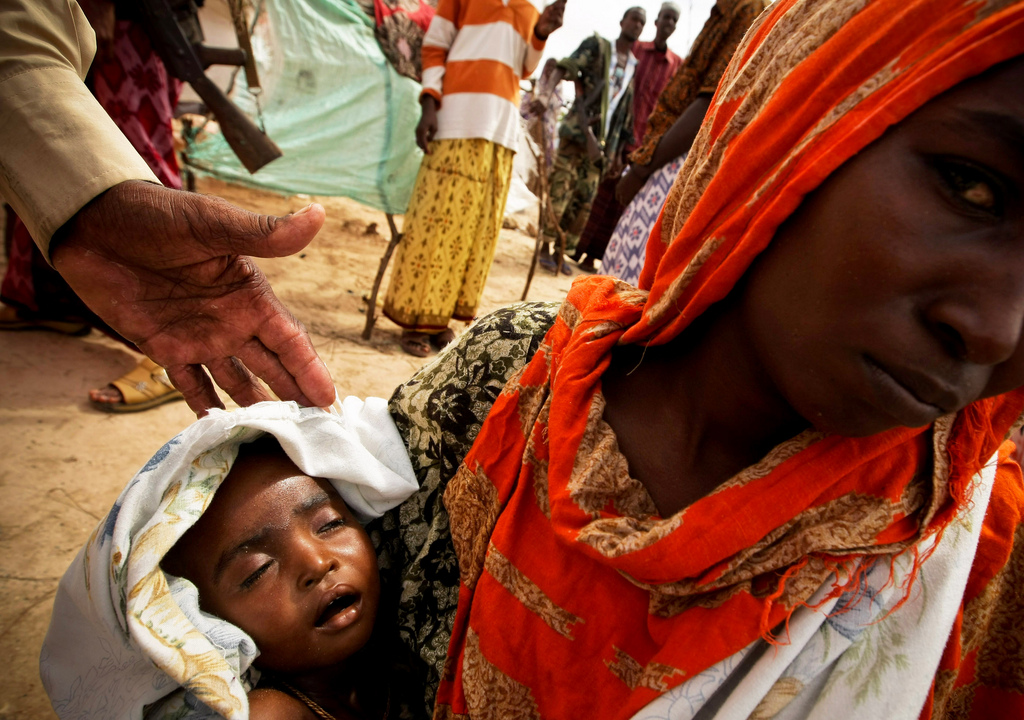
Biafra, Ethiopia, Sudan, Somalia… the same story, the same heartbreaking pictures of children starving, and the same anger: These children are not starving because there is not enough food. They are starving because their governments – or whatever is left of them – have failed and are failing to handle this crisis.
The famine and refugee crisis in Somalia, said to be the result of the worst drought in 60 years has left the international community floundering to address it. The crisis is the result of a combination of a two-decade old civil war and the second famine in 20 years. In response Somalis are fleeing to Mogadishu or Kenyan refugee camps. Families are compelled to leave behind the weak and disabled – including babies – on the long walk through conflict and drought zones in search of a means of survival. Most Somalis head to the Dadaab camp in Kenya – the world’s largest refugee camp. It is seriously overcrowded – with an official capacity to hold 90,000 people, it currently hosts more than 420,000.
Many of those who manage to reach to the camp die waiting to enter, as there are endless lines at the registration offices. And even those who enter the camp face a new risk of violence: the local marauding gangs and criminals in the camp. Men are beaten and women raped. The Kenyan police say they do not have enough manpower to stop them.
The crisis in Somalia is what the humanitarian community terms a complex emergency. Complex emergencies are humanitarian crises in places where there is total or considerable breakdown of authority resulting form internal or external conflict. It is often the combination of a natural disaster and war that leads to such an emergency – complex because it requires an international response that goes beyond the mandate or capacity of any single agency.
For policymakers and aid agencies, a complex emergency means multiple problems – and often the inability to address them. Complex emergencies are often characterized by
political or military constraints on humanitarian assistance – and significant security risks for humanitarian relief workers. Since 2009, Somalia’s militant Islamist group al-Shabab has banned Western aid agencies from operating in the country. Though some agencies say that they continue working through local partners, most abandoned the mission after al-Shabab killed a number of aid workers. The ‘war on terror’ has also inhibited assistance from getting to those who need it most. The US works to keep aid money out of the hands of Islamists, while Kenya refuses to open a newly and properly built refugee camp (the Ifo2 facility) for Somali refugees – because they are considered a security risk.
For the affected population, a complex emergency simply translates into acute suffering.

